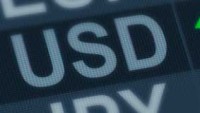
Having had such a decent run in July it was perhaps inevitable that we’d get a touch of the August blues in equity markets yesterday. The decline in stock markets wasn’t exactly helped by a further slide in oil prices and a series of underwhelming economic data announcements, as concerns about a global slowdown return to the fore.
This is probably why the RBA felt compelled to cut rates to a new record low this morning of 1.5%, particularly given that the US Federal Reserve appears to have stepped back from hikes and the RBNZ could well cut next week, given concerns that the Australian dollar could strengthen further and inflation remains weak.
The slide in oil prices since the peaks in June appears to have gone almost unnoticed throughout a lot of July, however the selloff has gained pace in the last week or so with Brent prices down over 15% from their peaks, on the realisation that markets have overestimated the speed that the supply glut would be worked off. US prices have lost 9% in the last week alone, as rig counts have continued to rise and gasoline inventories have refused to drift lower.
Banking stocks also resumed their declines of last week as speculation about further bad loan impairment provisions hit sentiment in the wake of plans to deal with the problem of Italian bank Monte dei Paschi di Siena’s problematic loan book. Adopting a similar methodology on the rest of the Italian banking sector would mean that Italy’s banks would potentially need to find billions of euros of replacement equity, not an easy task given that the estimated amount of NPL’s could be as high as €360bn.
There was also scepticism that the EBA bank stress tests painted a far too rosy picture of the health of Europe’s banks while paying no account of the current negative rate environment, nor for that matter the fiscal health of Portuguese and Greek banks.
Any hopes that the sharp slowdown seen in the UK manufacturing sector in the wake of the June Brexit vote may have improved in the wake of a more stable political environment were put to bed yesterday as the latest manufacturing PMI for July deteriorated even further from the initial flash numbers.
The worst numbers in more than three years showed a slide to 48.2 from 52.4 in June, with a sharp slide in new orders, reinforcing expectations that we could see some form of monetary loosening in a few days’ time from the Bank of England.
While the headline numbers were spectacularly disappointing there was a silver lining in the form of new export orders rising for the second successive month. Furthermore we also saw purchase price inflation surging to a five year high as higher commodity prices fed into higher import costs, as the lower pound fed through into a rise in inflationary pressures.
Today’s construction PMI numbers aren’t likely to be any better either given the weak lead up seen in the June numbers prior to the Brexit vote. The June numbers saw a sharp slide to 46 from 51.2 in May, with a further deterioration expected for July to 44.2 as the negativity seen in the build up to the referendum vote starts to play out in real time.
While those in the “remain” camp will no doubt claim that their worst warnings are about to come true the slowdown being seen in the UK is by no means unique with Italy, Spain and France also showing signs of weakness in the past few months, even if the Brexit vote has exacerbated the slowdown here in the UK.
What is clear is that with article 50 unlikely to be triggered until next year at the earliest, businesses are going to be faced with a choice, either sit back feeling sorry for themselves, or get on with it and take advantage of the opportunities a weaker pound has afforded them.
Given the data so far market expectations surrounding Thursday’s Bank of England rate meeting have continued to rise with short sterling bets at record levels, in anticipation of further fiscal stimulus.
This may well present the Bank of England with a problem in that whatever it does it will struggle to meet market expectations, even if it delivers at all. While it is easy to surmise that we’ve seen a shock we still don’t know whether it will be permanent or whether we’ll see a sharp rebound once the Brexit fog starts to clear.
EURUSD – still in a range finding support just below the 1.1000 area, but finding it difficult to rally with any conviction beyond the range highs near 1.1200. Interim support currently at 1.1120. To remove the risk of a move towards 1.0825 we need to see a move back above the 1.1250 area.
GBPUSD – continues to hold above trend line support from the lows this year, now at 1.3140 with the potential for further gains through the 1.3300 area and up towards the range highs near 1.3500. A move below 1.3050 would negate, and argue for a return towards 1.2800.
EURGBP – currently struggling to overcome the 0.8500 area, but still have support at the 0.8400 level. Above the 0.8500 level argues for a return to the July peaks at the 0.8600 area. Below the 0.8400 area reopens the support at the 0.8260 area.
USDJPY – continues to track lower and having pushed back below the 103.50 area looks set for a look at the 100.00 level. We need to see a recovery back through the 103.70 area first and then the 105.60 level.












